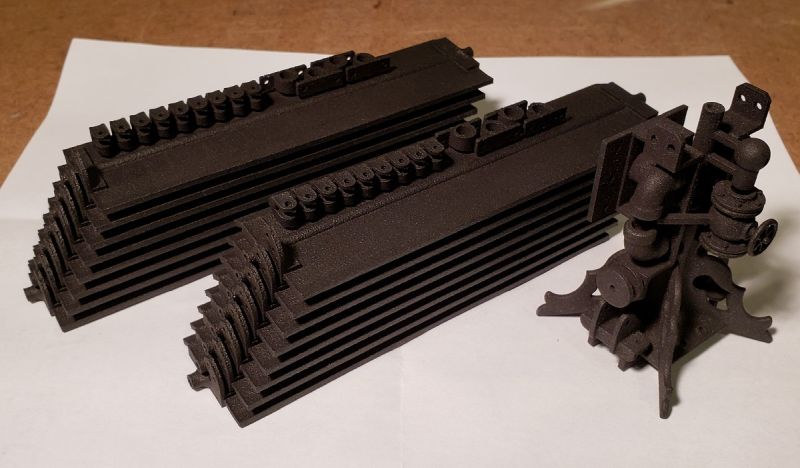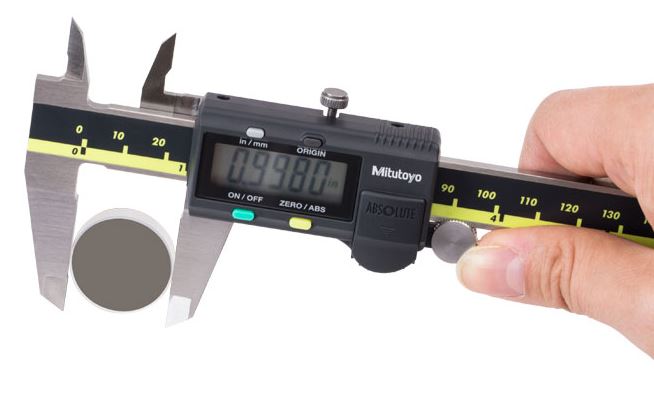Forrest Scott Wood said:
Hey Cliff, if I might go off on a V&T tangent momentarily;
the right side of those images brings up V&T question which I’ve not yet found the answer to. Knowing that B&W photography records reflectance of surfaces as much as, and sometimes more than, the tones of hues, can it be inferred that the roofs of those 2 passenger cars are a lighter hue than black?
I have books which document the various reds, greens, yellows, passenger cars wore through the years but they do not address roof hues.
Note the just barely visible 3 passenger car roofs behind the timber train, to left of passenger cars which are on train, and how dark they appear compared to the 2 passenger cars on the train.
Is that a difference in reflectance or a difference in hue?
And again, do these passenger car roofs appear light because of reflectance or because of hue?
So, here’s what I did about 7 years ago with my slooooooooooooooowly progressing repaint of Bachmann’s V&T Silverado set.
Yeah, I know, V&T 26 was not of the bright and shiny locomotive era, but that’s how Bachmann decorated it, so, after repainting the boiler jacketing from sky blue to a ‘more realistic’ hue I’m taking that and running with it.
Roofs are tan - and back to that reflectance thing, they appear a slightly lighter tan in image than they do to the eye.
Locomotive cab roof is light grey, which I’ve seen used some.
Forrest, I’ve asked the V&T group, and all I got is that the passenger car & cab roofs were covered with thin sheet metal, which was painted. A prominent historian is Mike Collins (former curator at CSRM, and highly knowledgeable of the V&T), and he says the paint color varied, with gray (on V&T coach #16) being an example.
So we’re not limited to tar / black, which is good to know. If one wanted to stick with colors of typical asbestos fireproof roofing paint of the day, this page by the Pacific Narrow Gauge group is a great resource.
Cliff
 have been in V&Tmodelers1869, and Virginia and Truckee, since November 2003 for at least one & since 2010 for the other, while they were still on Yahoo.
have been in V&Tmodelers1869, and Virginia and Truckee, since November 2003 for at least one & since 2010 for the other, while they were still on Yahoo.




